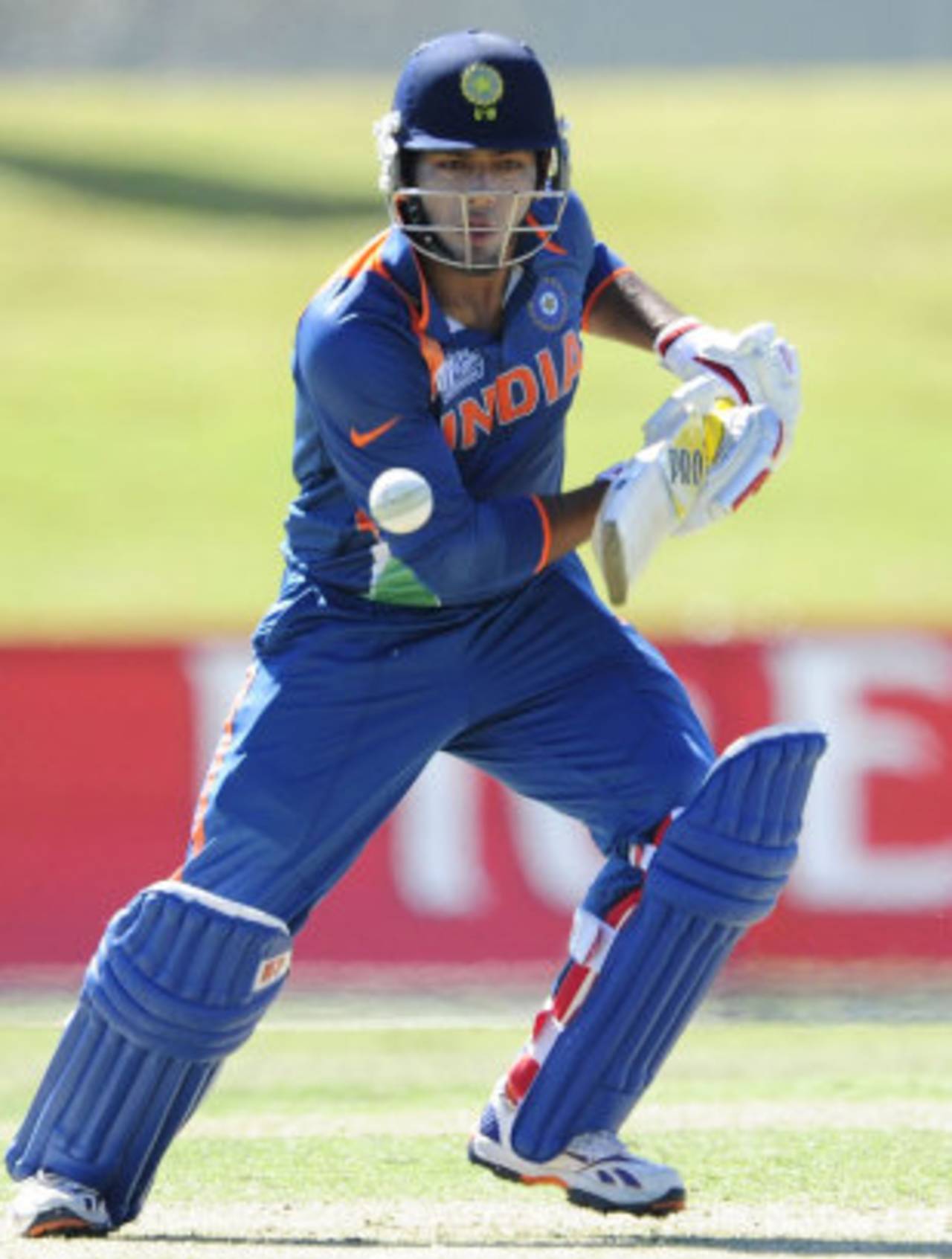After his 49
against South Africa, which helped put Australia in the final of the Under-19 World Cup,
Kurtis Patterson said the experience of batting on the pitches at Tony Ireland Stadium "can only improve your game, whether you get out or not". The three surfaces at the primary venue of the tournament have not been batting-friendly; they weren't at the start, when Australia
played England two weeks ago, and the one going to be used for the second semi-final between India and New Zealand isn't likely to be either.
India have played three matches here and their batsmen still haven't come to grips with it. To be fair, very few have.
Against West Indies, India were restricted to 166 for 8 and lost;
against Zimbabwe they made 261, but at one stage were in danger of scoring much fewer after a strong start; in
the quarter-final against Pakistan they chased down 137 with one wicket in hand.
New Zealand played one match at Tony Ireland during the quadrangular series in April, but Thursday's semi-final will be their first match here during the World Cup. While India's batsmen have the opportunity to learn from prior experience, they also have to overcome with any lingering doubts. New Zealand will just have to play it by ear.
Every team - apart from England
against Nepal and Pakistan, rather inexplicably, against India - has wanted to bowl first at this venue. The new balls have swung prodigiously, seamed and bounced. India's
Sandeep Sharma has bent it, perhaps, the most. An early wicket, often two and sometimes three, has become routine. The start of the second innings has been much the same, but teams chasing small targets have the luxury of forgetting the run-rate and battling it out. Batting becomes relatively easier after 20 overs, but it's still the sort of track where a batsman is never really in. The challenge for teams has been to get that far without mortal wounds.
A lot of innings have followed a familiar trend: early wickets, a period of recovery, more wickets as the set batsmen try to shift gears, and a slump at the end as the new batsmen don't have time to assess the conditions. There isn't a formula to succeed in such a testing environment. Each batsman has to find his own method, and there have been some contrasting ones on show.
South Africa's opener
Chad Bowes survived the new ball in the quarters and semi-final by predominantly playing straight. However, he was dismissed on 46 in both innings, when he was looking to push the scoring rate. India's
Unmukt Chand was extremely watchful in the group game against West Indies, ducking, weaving and defending for an hour and a half to score 22, before he edged to the wicketkeeper. Against Zimbabwe, Chand attacked successfully from the start, scoring 78 off 85 balls, but a similar approach against Pakistan ended in a duck off his sixth ball.
A couple of Australian batsmen came through in the chase against South Africa. After the customary two early wickets,
Cameron Bancroft and Patterson adopted different styles to pursue the target of 192. Bancroft was solid, taking few risks and running urgently between the wickets. Patterson was aggressive, hitting over the infield when he could. His approach was fraught with danger; he was dropped twice and nearly run out, but got lucky on the day. Bancroft, despite his caution, edged one and was dropped as well.
"I think it was a real tough wicket to score on," Bancroft said after that semi-final. "I reckon you have just got to guts it out for the first ten or 12 overs and after that, the scoring was always going to be a lot easier."
Patterson, who had a 95-run stand with Bancroft, offered a different perspective: "It's one of those wickets where, I think, if you sort of try and hang around then you can get yourself in trouble. I was just hoping to go out there and be as positive as I could. It paid off."
Chand had tried to approach the chase against Pakistan similarly, thinking a quick start would be decisive in a small chase, but failed to execute his plan. "One hundred and thirty seven is not a big target, I never thought that this could happen, that we'd lose nine wickets to score those runs," he said. "Because the wicket was flatter in the second innings, and all the fielders were up, a few boundaries could have eased the chase totally, that was what was on my mind.
"I don't think I'll do the same thing again. I'll probably try to hang in there and play as much as I can. You need to see off the new ball. If you don't lose early wickets, then that's a great bonus for the batting side. Two-three runs an over is good enough in the first 10-15 overs, if you have wickets in hand."
Having failed or succeeded, the batsmen who've been challenged by the conditions in Townsville will leave the World Cup with valuable experience. They've had their defensive and attacking techniques subjected to a torrid examination, their patience tested, and their assessment of what is a good total put on trial. All of them will go back home and work on their shortcomings to become better players in the future. But it's the ones who adapt best in the next week that are likely to take the World Cup back with them.
